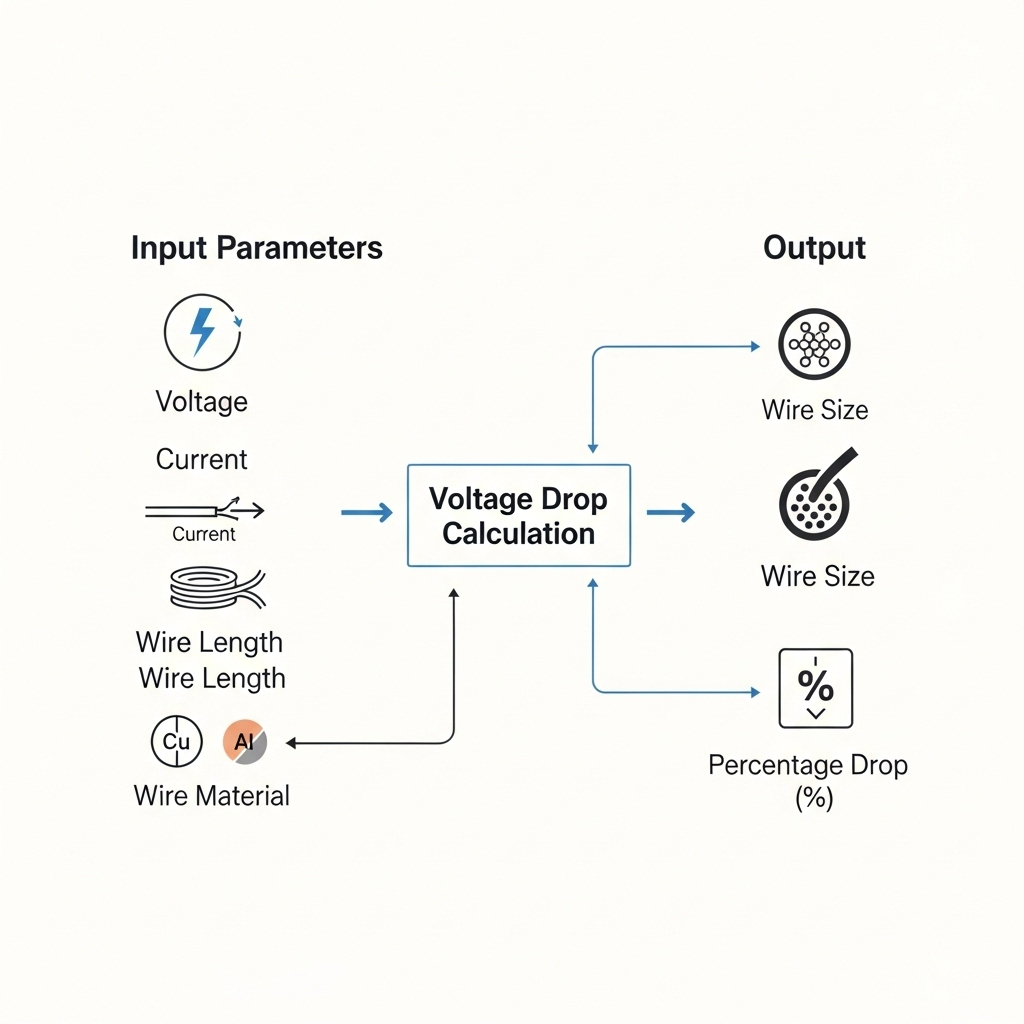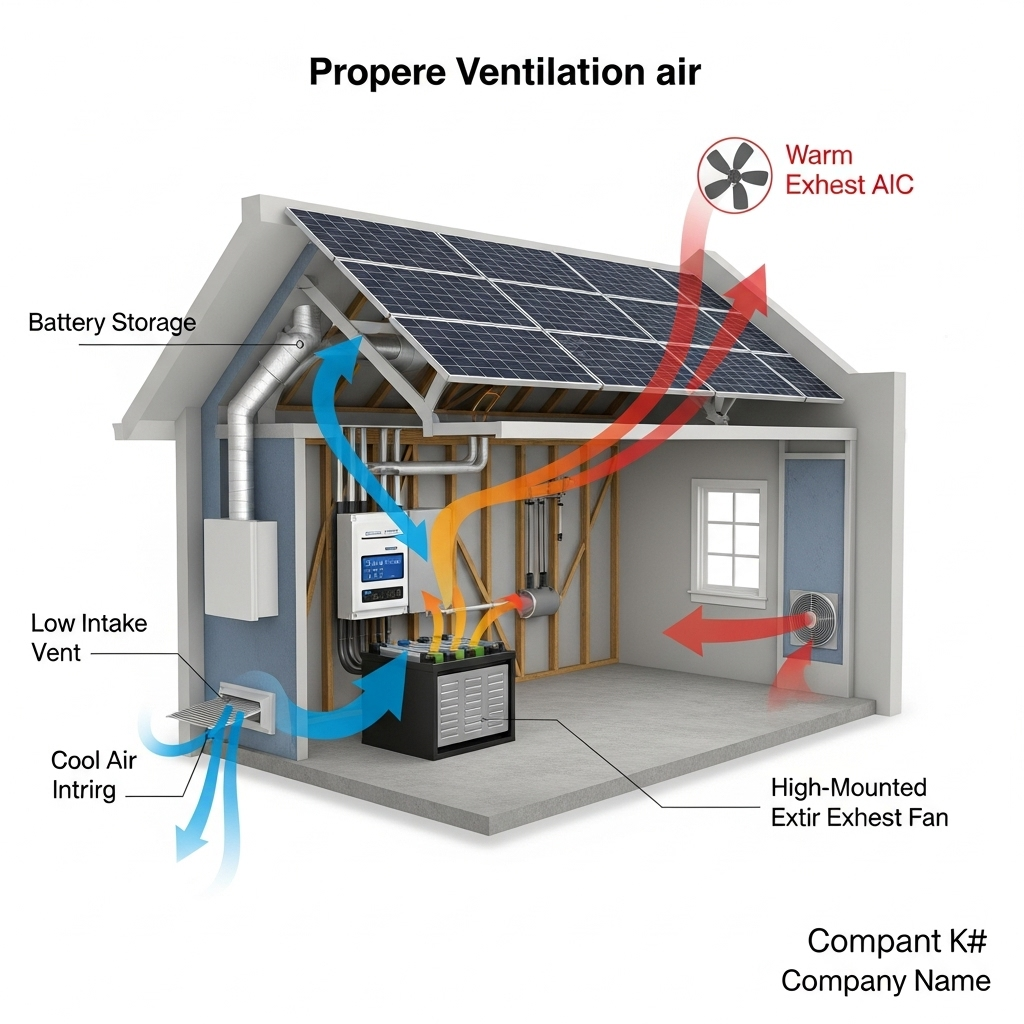Operating a photovoltaic (PV) microgrid in a remote location presents unique challenges. One of the most common yet frequently overlooked issues is DC voltage drop. This phenomenon can silently undermine system performance, leading to power loss, equipment malfunction, and premature component failure. This analysis explores a real-world scenario to illustrate how to identify, diagnose, and resolve significant voltage drop in a standalone solar power system, ensuring reliability and energy independence.
Understanding the Core Problem: Voltage Drop in DC Microgrids
In any electrical circuit, voltage drop is the reduction in electrical potential along the path of a current. While it occurs in all wiring, it becomes particularly problematic in low-voltage, high-current DC systems common in off-grid solar applications. The consequences are not trivial; they directly impact the energy you can use and store.
What is DC Voltage Drop?
Think of voltage as electrical pressure. As electricity travels through a conductor, it encounters resistance, causing this pressure to decrease. The longer the wire and the higher the current, the greater the drop. This results in less voltage—and therefore less power—arriving at your equipment than what was originally sent from your solar panels. This can cause inverters to trip offline or prevent batteries from receiving an adequate charge, leading to system-wide inefficiency.
Why Remote Microgrids Are More Susceptible
Remote PV microgrids often require long cable runs to connect solar arrays to a central power hub housing batteries and inverters. These long distances amplify the effects of resistance. Furthermore, as noted in research on renewable energy integration, standalone systems lack the stable voltage reference of a large utility grid. According to a report from the International Energy Agency, the absence of a stiff voltage waveform leads to wider voltage fluctuations. This makes precise voltage regulation within the microgrid itself a critical design factor.
The Case Study: A Remote Homestead's Power Issues
Consider a homestead with a 5kW solar array located 150 meters (approximately 500 feet) from the main house. The house contains the balance of system: a 48V LiFePO4 battery bank, a charge controller, and a hybrid inverter. The system was designed to provide complete energy independence for the property.
Initial System and Observed Symptoms
The system was initially installed with a wire gauge that seemed adequate at first glance. However, the owners soon noticed troubling symptoms. During peak sun hours, when the PV array's output was highest, the inverter would frequently shut down when large appliances like a water pump were activated. Additionally, the battery bank rarely seemed to reach a 100% state of charge, even on long, sunny days. These are classic indicators of a significant DC voltage drop between the solar array and the charge controller.
Diagnosing the Underlying Cause
The symptoms pointed to the charge controller receiving a voltage much lower than what the panels were producing. When a heavy load was switched on, the system voltage would dip below the inverter's low-voltage cutoff threshold, causing it to disconnect. The reduced voltage also meant the charge controller could not effectively push enough power to fully charge the high-performance lithium batteries, compromising their capacity and potentially their lifespan. This highlights the importance of maintaining stable voltage for efficient energy storage.
Quantifying the Loss and Implementing Solutions
To confirm the diagnosis, a quantitative analysis was necessary. By calculating the voltage drop, the exact scale of the problem became clear, paving the way for an effective solution. This process involves simple but crucial calculations that should be part of any PV system design.
Calculating the Voltage Drop
The voltage drop was calculated using the system's parameters: a maximum current of approximately 104 amps (5000W / 48V) and a 150-meter cable run. The initial installation used a wire gauge that resulted in a calculated voltage drop of over 7%. This meant that of the 48V nominal output, over 3.36V was being lost as heat in the wire. This loss translated directly into a significant power reduction at the charge controller.
| Parameter | Expected Value | Actual Value (Due to Drop) | Impact |
|---|---|---|---|
| Voltage at Controller | 48V | ~44.6V | Reduced Charging Efficiency |
| Power Delivered | 5000W | ~4640W | 360W Power Loss |
| System Performance | Optimal | Sub-optimal | Inverter Trips, Incomplete Charging |
The Primary Solution: Correct Conductor Sizing
The most direct solution was to replace the existing conductors with a much larger wire gauge. By recalculating for a target voltage drop of less than 3%—a widely accepted industry standard—a new wire size was selected. This single change dramatically reduced the resistance over the 150-meter run. The new voltage drop was under 1.5V, restoring system stability and ensuring nearly all the generated power reached the batteries. Proper conductor sizing is not an area for compromise; it is fundamental to system performance.
Additional Strategies for Voltage Regulation
While resizing the wire was the key solution here, other strategies can also mitigate voltage drop. Increasing the system's nominal voltage (e.g., to 96V or higher) would decrease the current for the same amount of power, subsequently reducing voltage drop. Additionally, modern power electronics can assist. As the IEA points out in its work on flexible electricity systems, smart assets like boost transformers and VAR compensators can stabilize local grid voltage, a principle that also applies to microgrids. For new installations, placing system components strategically to shorten long DC cable runs is another effective approach.
Final Thoughts on Resilient System Design
Addressing DC voltage drop is a foundational element of designing a reliable and efficient remote PV microgrid. This case study demonstrates that overlooking conductor sizing can lead to significant performance issues that mimic component failure. By properly calculating for voltage drop from the beginning, you ensure that every watt generated by your solar panels is effectively delivered to your batteries and loads. As energy systems evolve, robust designs become even more critical. Many modern grid codes now require renewable installations to have fault-ride-through capability, meaning they must continue operating during a system voltage drop. This underscores the need to build resilient systems from the ground up, starting with the wires that connect everything.
Frequently Asked Questions
What is an acceptable voltage drop percentage for a PV system?
A common industry target is to keep voltage drop below 3% for DC circuits from the array to the controller. Some standards may allow up to 5%, but a lower percentage is always better for maximizing efficiency and system performance.
Can I use AC instead of DC for long distances?
Yes, for very long distances, using microinverters at each panel to convert DC to AC immediately can be an effective solution. This approach avoids DC voltage drop issues over the main cable run, though it introduces different equipment requirements and AC transmission considerations.
How does temperature affect voltage drop?
Higher temperatures increase the electrical resistance of a conductor. This means that on a hot day, the voltage drop in your system will be higher than on a cold day. It is important to use temperature correction factors when selecting wire sizes to account for the highest expected ambient temperatures.
Does voltage drop affect battery charging?
Absolutely. If the voltage arriving at the charge controller is significantly lower than the PV array's output, the charging process becomes inefficient and slow. In severe cases, it can prevent batteries from ever reaching a full state of charge, which negatively impacts their health and lifespan. For a deeper look into this, understanding the nuances of solar storage performance is crucial for system longevity.





Leave a comment
All comments are moderated before being published.
This site is protected by hCaptcha and the hCaptcha Privacy Policy and Terms of Service apply.